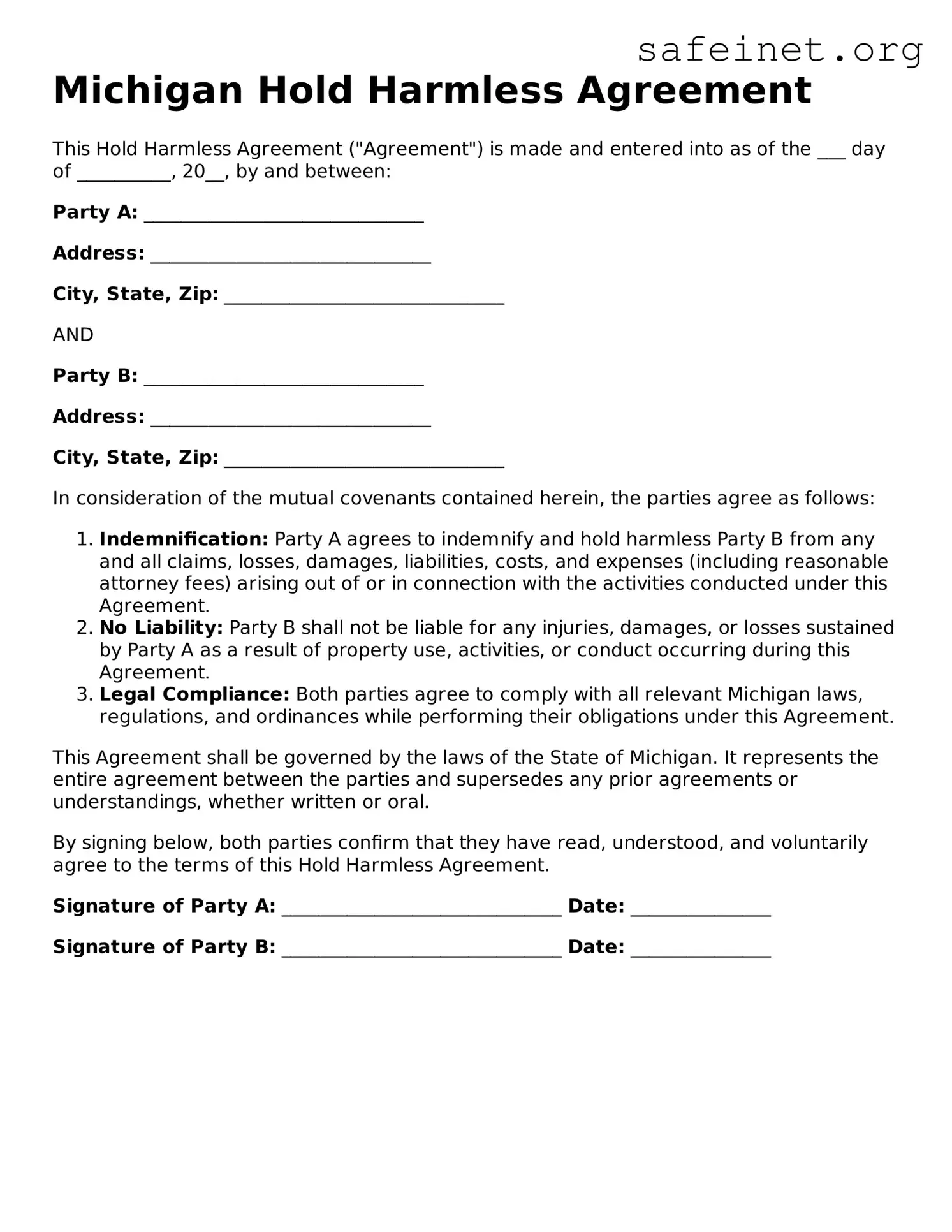Michigan Hold Harmless Agreement
This Hold Harmless Agreement ("Agreement") is made and entered into as of the ___ day of __________, 20__, by and between:
Party A: ______________________________
Address: ______________________________
City, State, Zip: ______________________________
AND
Party B: ______________________________
Address: ______________________________
City, State, Zip: ______________________________
In consideration of the mutual covenants contained herein, the parties agree as follows:
- Indemnification: Party A agrees to indemnify and hold harmless Party B from any and all claims, losses, damages, liabilities, costs, and expenses (including reasonable attorney fees) arising out of or in connection with the activities conducted under this Agreement.
- No Liability: Party B shall not be liable for any injuries, damages, or losses sustained by Party A as a result of property use, activities, or conduct occurring during this Agreement.
- Legal Compliance: Both parties agree to comply with all relevant Michigan laws, regulations, and ordinances while performing their obligations under this Agreement.
This Agreement shall be governed by the laws of the State of Michigan. It represents the entire agreement between the parties and supersedes any prior agreements or understandings, whether written or oral.
By signing below, both parties confirm that they have read, understood, and voluntarily agree to the terms of this Hold Harmless Agreement.
Signature of Party A: ______________________________ Date: _______________
Signature of Party B: ______________________________ Date: _______________
